Recent Articles
Popular Makes
Body Types
2018 Toyota 86 vs. 2018 Honda Civic Si: Which Is Best?
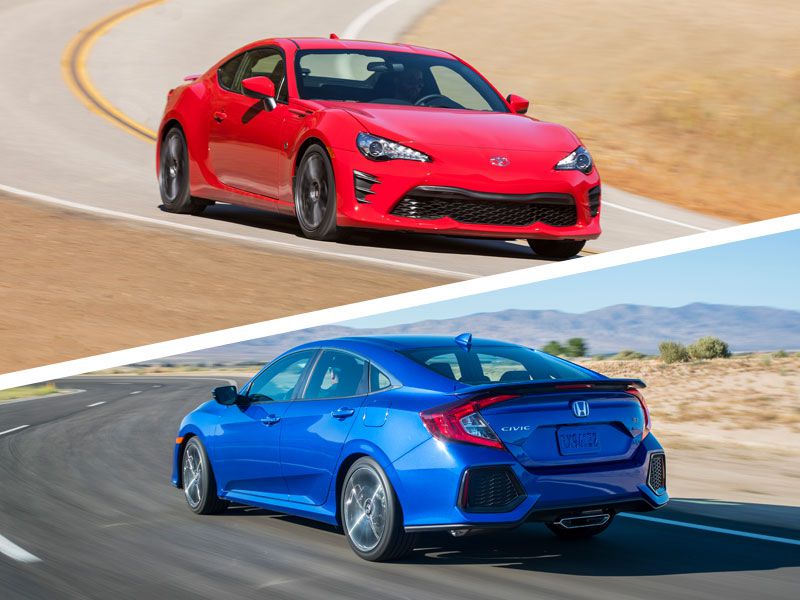
2018 Toyota 86 vs Honda Civic Si hero ・ Photo by Toyota / Honda
In today’s automotive marketplace, even affordable cars can boast tremendous levels of safety, technology, refinement, and smartphone connectivity. But beyond that trend of high-tech isolation chambers, you can also find a surprising number of affordable fun cars, including the 2018 Honda Civic Si and the 2018 Toyota 86.
The Civic Si is a higher-performance version of Honda’s standout economy car, featuring powertrain and suspension upgrades that boost the car’s driving enjoyment. The 86, formerly called the Scion FR-S, is a rear-wheel drive coupe that Toyota co-developed with Subaru. Each car has its own set of pros and cons, making them appealing to different types of buyers.
Handling
Perhaps the single most important quality of a sporty car is its ability to delight the driver. The 86 was purpose-built to achieve this goal. Its rear-wheel drive architecture provides superior weight distribution and more control near its cornering limits. The Toyota is also lower and lighter than the Honda, and its steering is fantastically alert.
The Civic Si is no slouch, either. All Civics have respectable composure around a fast curve, and the Si does better than the norm. But especially in routine driving, it feels more relaxed than the always-eager 86. You have to upgrade to the Civic Type R for all-out handling thrills — for a lot more money.
Toyota 86
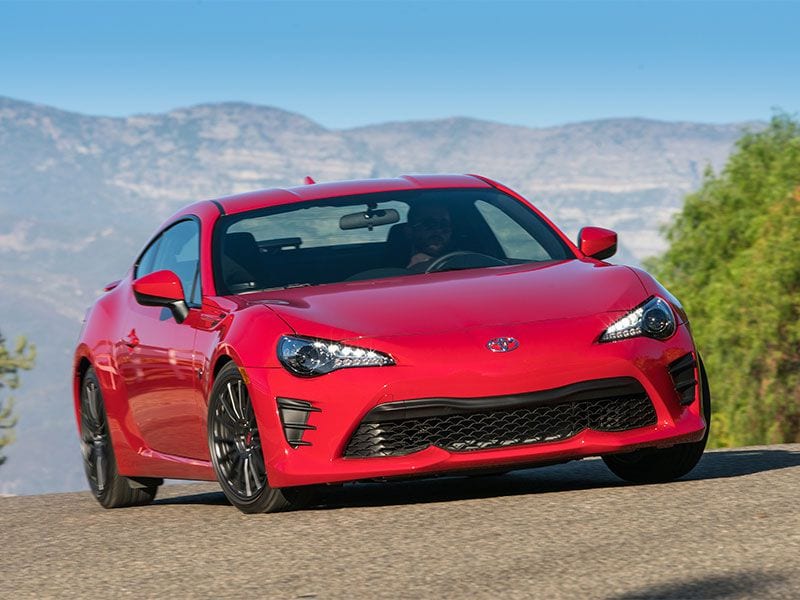
Photo by Toyota
Powertrain and Acceleration
Let us be clear: We love sporty cars with manual transmissions. Shifting your gears maximizes your control over the car’s engine, and it’s yet another fun part of the driving experience. But we recognize that not everyone feels the same way, even those who like sporty cars. That’s why we appreciate that the 86 is offered with a six-speed automatic transmission in addition to its standard six-speed manual. The Civic Si comes only with a six-speed manual.
Both cars’ manuals are excellent — short, precise throws make them a joy to use. And we prefer the sound of the Civic’s engine (a 1.5-liter, 205-horsepower four-cylinder turbo) over the 86’s 205-hp naturally aspirated 2.0-liter four-cylinder. But the 86 is slightly quicker, and the available automatic makes it accessible to more buyers.
Toyota 86
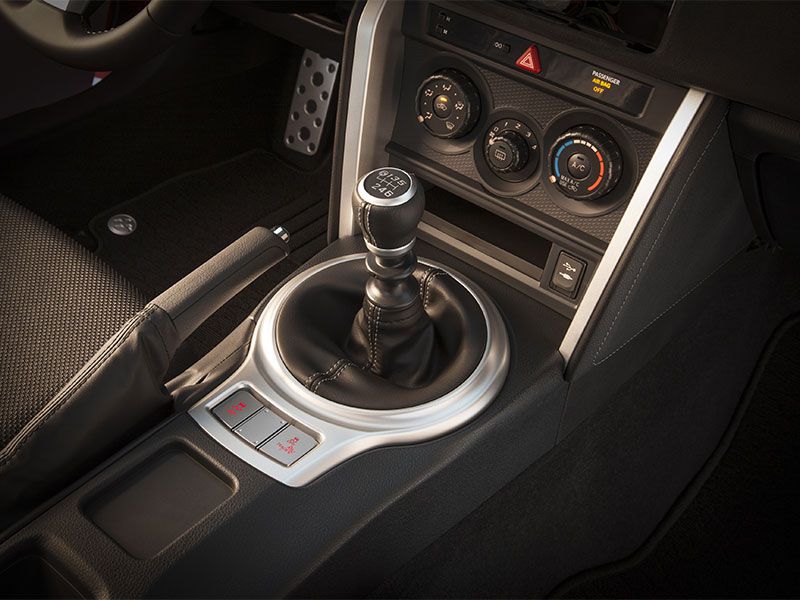
Photo by Toyota
Interior Comfort and Utility
A roomy interior may not be your top priority if you’re looking for a fun car — but that hardly renders it irrelevant. And the Civic Si walks away from the 86 in this regard. Its front-wheel drive architecture results in a roomier, more space-efficient cabin than the rear-wheel drive Toyota.
The 86’s rear seat is for emergencies only, and it has just 6.9 cubic feet of trunk space. The Civic Si sedan, by contrast, has stretch-out space for four adults (or five in a pinch) and more than twice the trunk volume (14.7 cubic feet). Even the Civic Si Coupe is decently roomy, though less accessible than the sedan.
Honda Civic Si
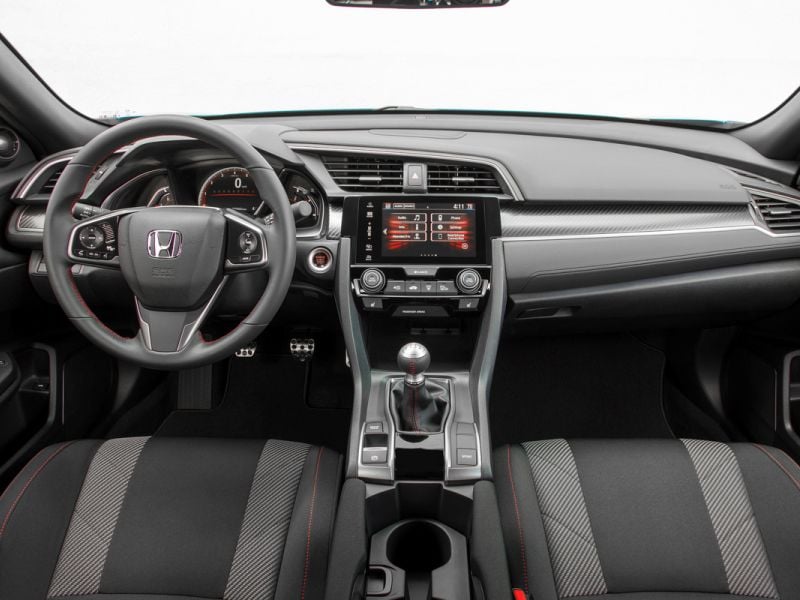
Photo by Honda
Refinement and Luxury
The Civic Si continues to feel more like a Civic than a sports car when it comes to refinement and luxury — in a good way. The 86’s interior dates back to the 2013 Scion FR-S, and its ambiance doesn’t match the more modern Honda.
The sport-focused Toyota is stiffer-riding and noisier than the Civic Si, too, and we prefer the sounds we do hear from the Honda’s engine. Once again, we don’t think you’re buying your sports car for a whisper-quiet ride, but the Civic Si is the more relaxing option for a road trip or the daily grind.
Honda Civic Si
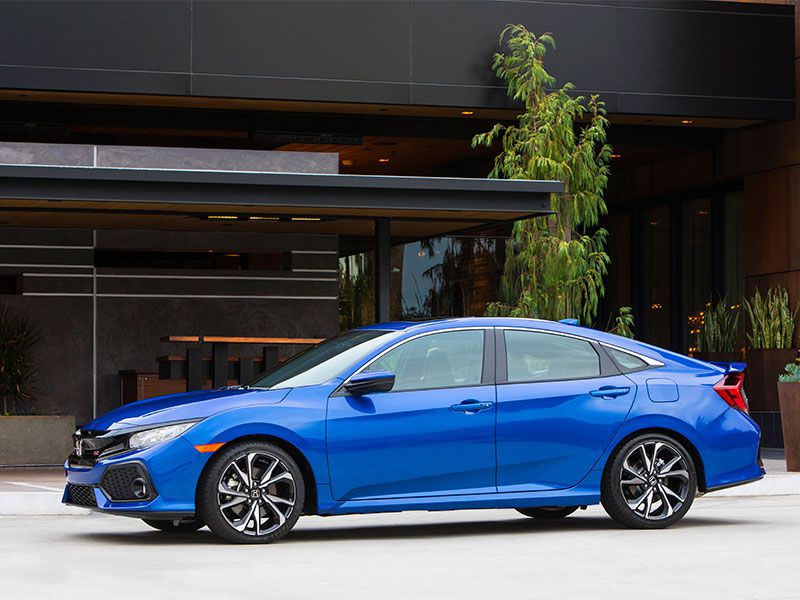
Photo by Honda
Connectivity
Both the Civic Si and the 86 come standard with a 7-inch infotainment touchscreen. Neither is exactly cutting-edge, and it’s annoying that the Honda lacks a knob for audio volume, but the Civic Si has a big advantage over the 86: It supports smartphone integration through Apple CarPlay or Android Auto, which let you use your phone’s GPS and some other apps through the touchscreen. The Civic Si also boasts two USB ports, while the 86 only has one.
Honda Civic Si
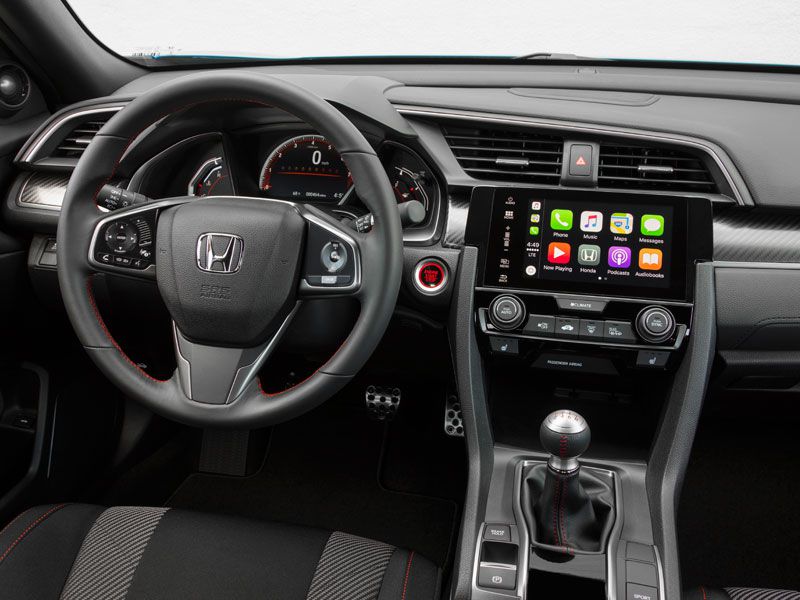
Photo by Honda
Styling
Since 2016, the Civic has used extra-aggressive styling details to evade the economy-car norm. The sedan and coupe are shaped almost like hatchbacks, with the sleek roofline flowing back toward the end of the car. Its body is sculpted with sharp creases, and the Si version is dressed up further with decorative gaps on the front and rear bumpers; a lip spoiler; a blacked-out grille; and a large central exhaust pipe. The Civic coupe also features an eye-catching light bar connecting the taillights.
The 86's body is smoother and simpler, but there’s something captivating in its svelte, subtle shape. Its front and rear fenders arch gently over the wheels, bending the taut body. Low and sleek, it looks like an exotic car in a way that no Civic can.
Toyota 86
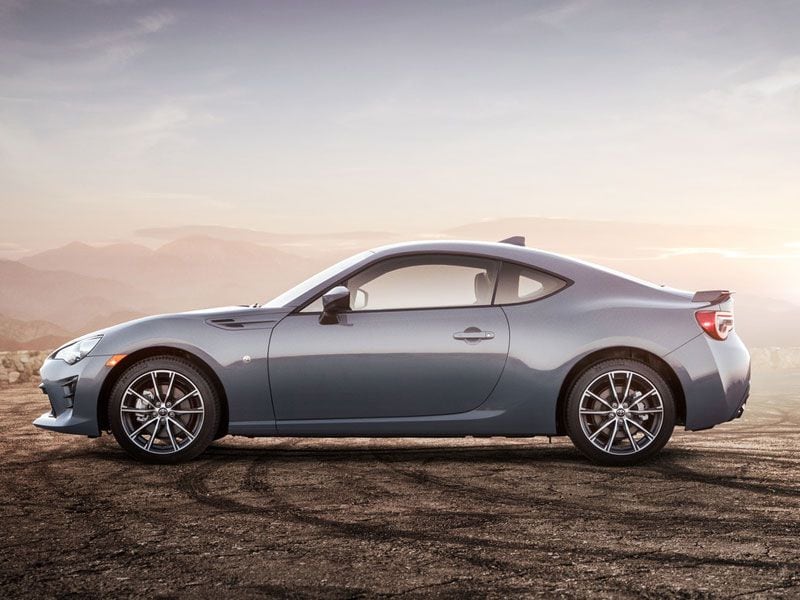
Photo by Toyota
Price and Features
The Civic Si’s pricing is simple. The sedan and coupe both cost $24,100, and there are no major options available. Standard equipment includes a power moonroof; a 10-speaker sound system; heated front seats; Honda’s “LaneWatch” blind-spot camera; automatic climate control; and push-button starting. (There’s also an electronic parking brake, though purists might prefer a manual one.)
The 86 starts at $26,255 with fewer features. There’s no moonroof, electronic parking brake, push-button starting, automatic climate control, or heated seats. The $28,385 GT trim does add the latter three, along with partial leather upholstery — a nicety that’s absent from the Honda. And you can buy a $720 automatic transmission on the 86, while the Civic Si is manual-only. Neither car comes fully loaded, though. You can’t get power seats, a navigation system, radar-based cruise control, or automatic emergency braking on either the 86 or the Civic Si (though all are offered on some other Civic trims). Toyota does include two years or 25,000 miles of free scheduled maintenance, but the Honda is less expensive overall.
Honda Civic Si
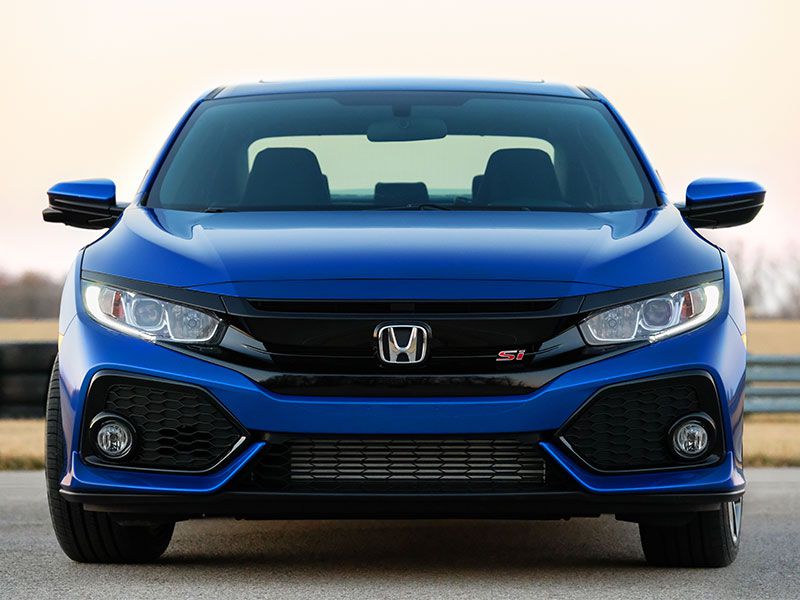
Photo by Honda
Safety and Fuel Economy
While neither the Civic Si nor the 86 offer all the latest accident-avoidance technology, both do well in crash tests. The Civic sedan aced every test from the National Highway Traffic Safety Administration and Insurance Institute for Highway Safety. The Civic coupe is close behind, falling just short of perfection in the NHTSA frontal crash test. The 86 matches the Civic coupe’s NHTSA rating while also scoring Acceptable, rather than the top rating of Good, in the toughest IIHS test.
The Civic Si widens its advantage with excellent fuel economy. The EPA rates it at 32 miles per gallon in mixed driving, better than many cars with a lot less horsepower. The 86 is rated for just 27 mpg overall with its automatic transmission, while the manual version falls to 24 mpg. (We did beat the EPA figures while testing the manual 86, at least.) Both cars require premium fuel.
Honda Civic Si
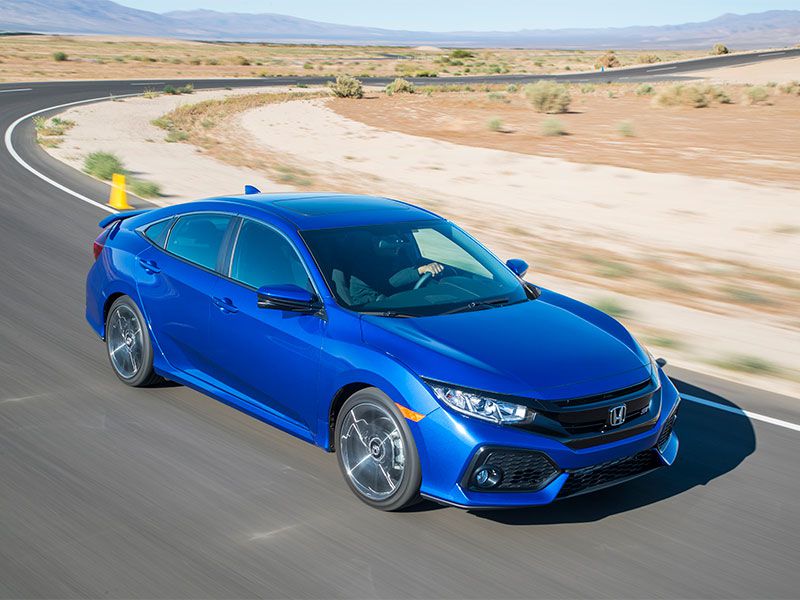
Photo by Honda
Uniqueness
The Civic Si is one of many small front-wheel drive sporty cars. Others include the Ford Focus ST, Hyundai Elantra Sport and Veloster, Nissan Sentra Nismo, and Volkswagen Golf GTI. But there are only two rear-wheel drive compact coupes sold in the U.S.: the Toyota 86 and its own sibling, the Subaru BRZ.
Drivers favoring rear-wheel drive can also get the larger Chevrolet Camaro, Ford Mustang, or Dodge Challenger coupes, or the two-seat Mazda MX-5 Miata or Fiat 124 Spider roadsters. But if you especially like the 86’s zesty driving character, or its sleek little body, it’s tough to be picky — you may need to accept its limitations to get its unique strengths.
Toyota 86
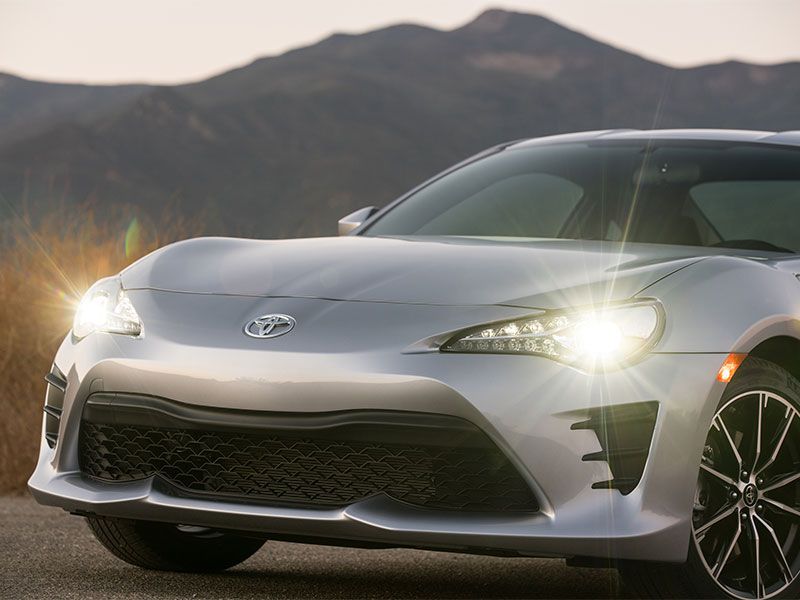
Photo by Toyota
Overall
When you’re alone on a winding road, you’ll want to be in the 2018 Toyota 86. Lower, lighter, and brilliantly responsive, the 86 delivers pure driving pleasure, along with a more exotic appearance.
But the better all-around car is the 2018 Honda Civic Si. While its less hard-edged nature results in fewer thrills, it manages to combine a fun-to-drive experience with a spacious cabin, pleasant ride, affordable pricing, modern smartphone connectivity, and thrifty fuel efficiency. Just be prepared to shift your own gears.
Honda Civic Si

Photo by Honda